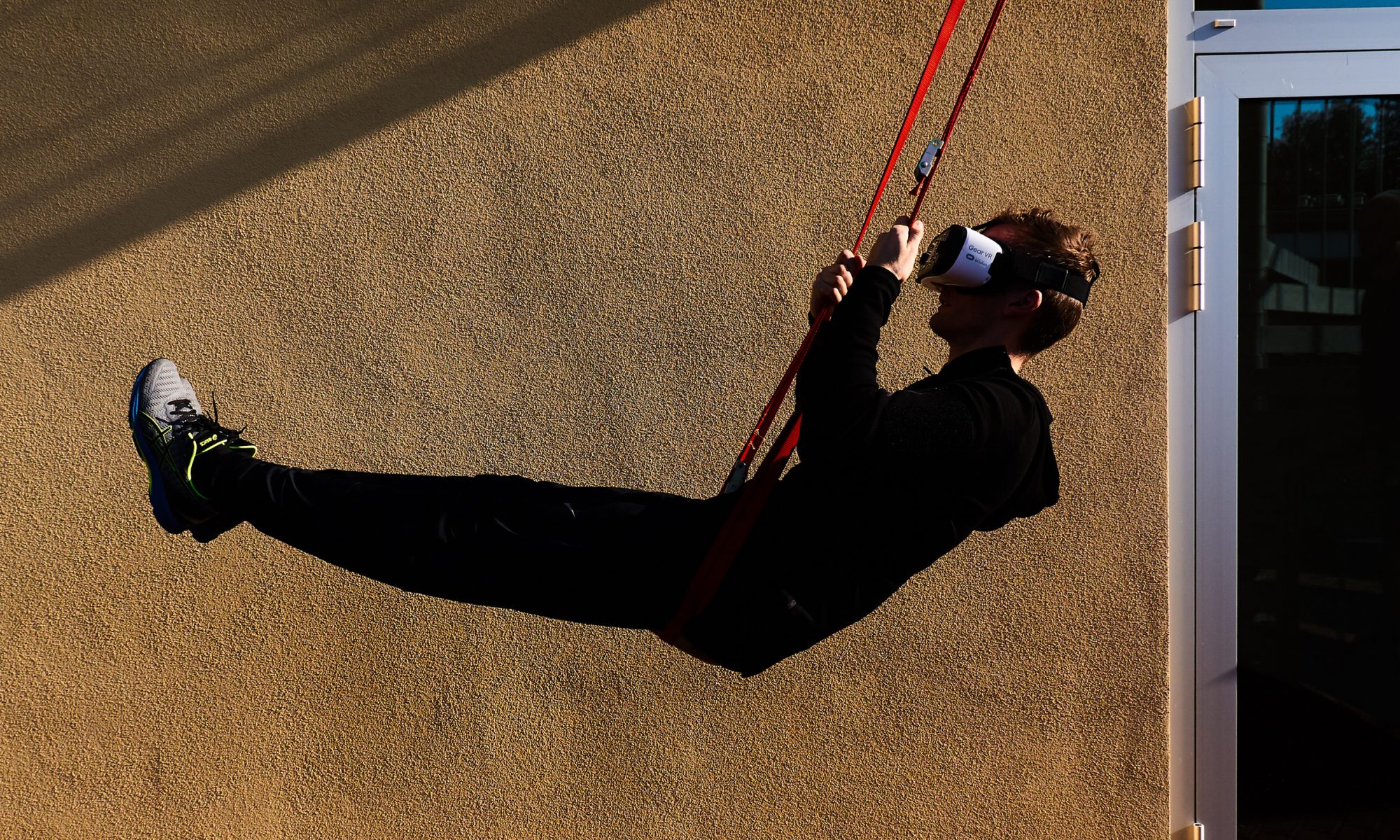Fast Feel Better Move Better LunchTime – Tues Noon Sept19
YOU ARE INVITED to a no pressure, light weight, quick lunch time check to help you move better, with less effort, more benefit. Guaranteed! you’ll learn something GOOD AND get to try it out, AND get some professional feedback
NOON TUESDAY 19th, South End B32, OUTSIDE in the Jubilee lawn area by B85(Life sciences) and B32 (EEE).
Am getting a Room in case it rains – please sign up so i can email you on the day if it’s wet where our alternative space will be (waiting on room booking confirmation).
WHAT WE’ll DO:
Five Moves:
- No hands Sit Stand (multiple ways to do this)
- Bear
- Monkey
- Crab
- Frogger
These are moves you can do pretty much anytime, anywhere.
They’re simple for sure and great for Movement Snacks during the day.
The point of the workshop is get some cues and checks to help you make the most of these moves. And have some fun! and maybe ask questions, learn something new.
So Join Me Please
NOON TUESDAY 19th, South End B32, OUTSIDE in the Jubilee lawn area by B85(Life sciences) and B32 (EEE). (and yes we’ll have a rain day room just in case)

SIGN UP IS EASY And if you wouldn’t mind, please let me know you’re coming – just hit this form you can just show up but will help with planning – and with letting you know our rain day room if needed.
Comfy Clothes recommended (will also say, these moves are Jeans tested cuz if you can’t do it in jeans…)
MOBILITY RESTRICTIONS?
no worries – we have a two heuristics:
First – meet the move where you are – that’s all. wherever you are is fantastic
Second – no pain, no pain.
Pain is a great guide – don’t move into it (don’t work to find it either).
A test is: reduce range, load, speed or any combination of these to explore a mover. if there’s still pain, DON’T DO IT.
That said: please check the Small Print in the next section to make sure you feel good to go.
SMALL PRINT
By coming you are acknowledging you’re dandy to come exercise – if you’re curious about the kinds of questions folks ask to check that, here’s a typical readiness set of questions:
- Has your doctor ever said that you have a heart condition and that you should only do physical activity
recommended by a doctor? - Do you feel pain in your chest when you do physical activity?
- In the past month, have you had chest pain when you were not doing physical activity?
- Do you lose your balance because of dizziness or do you ever lose consciousness?
- Do you have a bone or joint problem (for example, back, knee or hip) that could be made worse by a
change in your physical activity? - Is your doctor currently prescribing drugs (for example, water pills) for your blood pressure or heart condition?
- Do you know of any other reason why you should not do physical activity?
and if you say YES to any question the usual suggestion is to Talk with your doctor by phone or in person BEFORE you start becoming much more physically active or BEFORE you have a fitness appraisal. Tell your doctor about the which questions you answered YES. You may be able to do any activity you want — as long as you start slowly and build up gradually. Or, you may need to restrict your activities to
those which are safe for you. Talk with your doctor about the kinds
YOu can find the whole form from which the above is taken here: https://sunnybrook.ca/uploads/par-q.pdf
And if you’re curious why these movements?
Check out these folks and see if you can relate.
There’s way more where these came from – you can find a case study that maps to you for sure.
BRING A FRIEND – or a colleague :)!!
S/LowParkour – all the awesome strength balance mobility – without the fear of Death and Injury Part?
This post is going to tell you about what i’m calling slow and low parkour – S/LowParkour – S/LowPark.- LowPark? Dunno yet. it’s something i’ve been seeking for years and finally realized may be staring me in the face. And now i offer this insight to you, to see if you agree and to test out. That is, if full on parkour feels one step or leap too far, we can all s/lowP towards uber strength, mobility, balance, movement. But first, a bit of background.
Parkour is probably the most amazingly awesome whole body movement practice – of moving like a human. It has several awesome qualities: its first awesome quality is that It includes what we’ve been saying makes up MOVEMENT: the coordination of strength, mobility, balance. It also relies on the environment as it is, to be explored as opportunities for movement, rather than obstacles to movement. That’s a second awesome.
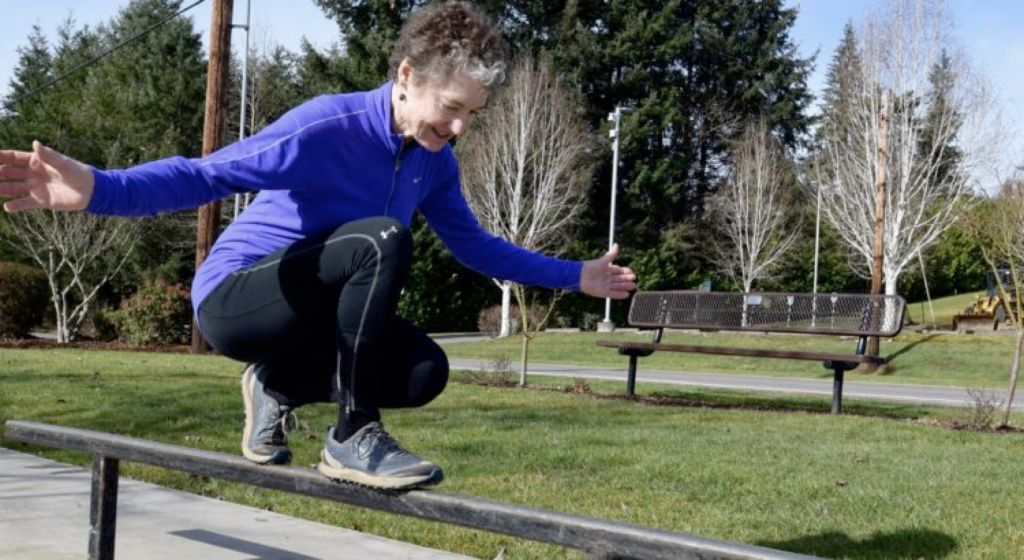
A Third Awesome is that Parkour – unlike your favorite Arnie gym movement (even my beloved pull ups) – goes across ALL planes of motion.
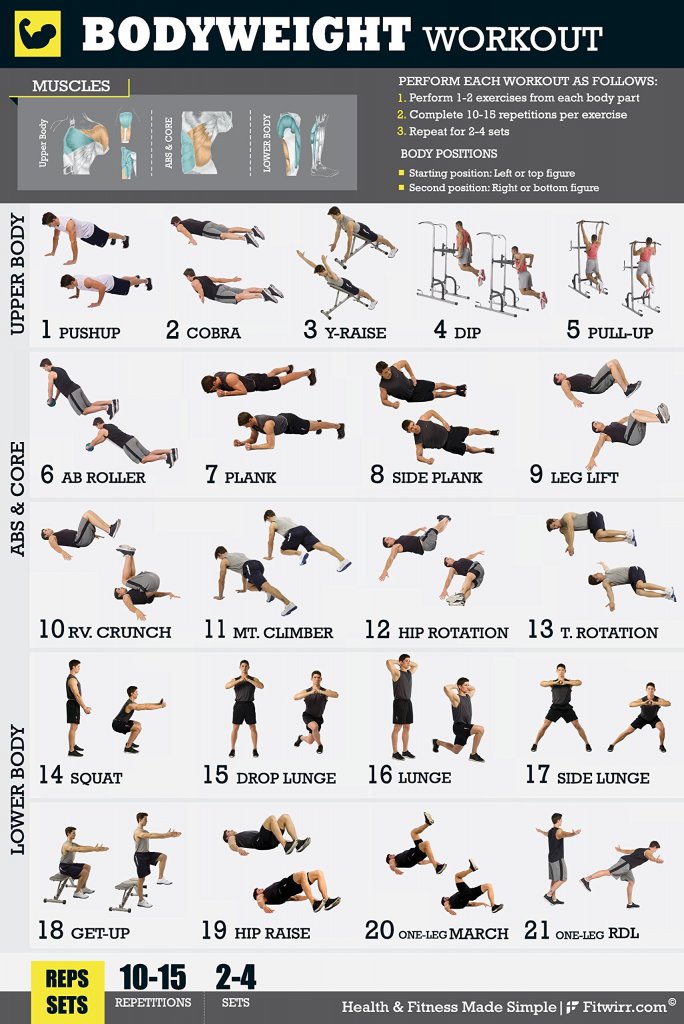
Check it out: any gym workouts with weights – or without and you’ll note that they all pretty much map to ONE plane of motion, the sagittal plane (as per the Bodyweight workout chart to the side).

When we’re walking/running we’re in the sagittal plane – so pretty normal. But in life we also have to move to the side, reach over, turn, jump. Break out of the saggital
We therefore need to practice our MOVEment in these planes just as much as the saggital if we want to be smooth and efficient in them – which is what parkour definitely does.
Coordination of Strength Balance Mobility
When folks practice parkour, they include jumping down from ledges or up to ledges, walking on ledges. So balance, mobility, strength, are each challenged, concurrently. That’s fantastic: that’s movement.
Parkour also has a lot of grip work – grabbing, releasing, pulling, pushing – grip strength is correlated with mortality, how bout that? so good there too. Out for a walk? ANything becomes a possible place of exploration. Fantastic.
A challenge for parkour uptake is possibly the fear threshold – especially for those of us whom we might call “risk averse.” – We’ve seen district 13:
Towards slower/lower Parkour ?
The core or heart of parkour, it seems to me, is about its very multi-planer movements – there’s a lot of work where both hands and feet are involved at the same time – from hanging onto a wall and climbing up or dropping into a roll from a great height. It’s all very kinetic, and all very full body.
That dynamism with the whole body in play is not there in the things i usually use and have built up a strength practice around for years- like kettlebells, pull ups, push ups, presses – all things sagital, and mainly minimal kit – like a pull up bar, rings, and yes kettlebells, bands (as per this list of making such tools accessible).
These practices however are not what one would call “athletic” in the sense of athletic movement. What football player, or even golfer moves just in the sagittal plane? What of any physical, land-based play, involving the whole body, moves in just that single direction?

Outside this space (or box) of pull ups, push ups, swings, rings and dips, I’ve been dauntingly inspired by the definitely beyond saggital plane movement work of Ido Portal (for example this low bridge rotation attempt). And for years and years have observed systems like Natural Movement (MovNat) (eg this Hawaii island run jump and climb) And, a bit more recently, the coordinated patterns of Animal Flow. And there are many more with that capoeira vibe – all of which felt – i gotta say – either completely (and prohibitively expensively) out of reach or just not my jam. Too structured; not structured enough. Largely featuring men without shirts on showing off their incredibly ripped torsos, doing supposedly intro tutorials that were not intro at all.
And then, more recently, what i’ve been practicing and sharing with folks – particularly in terms of building a strength practice – is a bit of a change. It’s inspired by GMB fitness and their four core, four on the floor movements: monkey, frogger, crab, bear. Why? several reasons
- The approach to movement is ACCESSIBLE: start where you are – whatever challenge you find there is GREAT – and here’s how to get going. No guys without shirts; actually some women; older and younger Case Studies – VERY FRICKING HUMAN. Ya, in my practice i do deal with Real Athletes in Pain, but most of the time, i’m working with Us Normal Humans. So i really appreciate seeing Normal Humans doing this stuff.
- The WAY of these Movements: These “animal” movements get our arms working with our lower body – so there’s a whole body coordination involved – strength, balance, mobility – the whole movement package at once – like parkour – and heck – like life.
- NEW ORIENTATION NEW SENSITIVITIES NEW BRAIN/MUSCLE WORK MORE RESILIENCE By working the body in new ways – like on all fours – we are re-learning balance and mobility and developing that precious odd angle strength.
- These moves also capture most of the move fundamentals of push, pull, rotate, squat, carry. They’re a little light on pull – which is hard to get without grabbing something.
- there are more moves in the GMB kit that capture rotations in what they frame as developing the transitions between these moves towards flows – including shoulder roles, rocking – stuff – that bringts these moves together
ARE THESE Animal MOVES THE HEART OF S/LowParkour? These animal movements – the four on the floor – give us – i think – therefore – the LOW part of parkour. And the approach – makes it super accessible – letting us SLOW down the moves – in fact slowing moves is not only important for skill building it’s also strength building (as touched on in this post around concentrating in the contraction). The mission i get from GMB – and you can hear it yourself in their videos is – start where you are.
Great! – so we have balance work in these, a lot of strength, a lot of coordination because these movements are whole body in motion, and we have mobility – for these motions. These attributes cover a lot of parkour. What’s missing? Anything missing?
Other Parkour Bits for S/Low: Grip, Pull and Leap

While the GMB animal moves are likely the heart of S/Low Parkour, there are a few more bits to include (and let me keep my pull ups as an option – you’ll see)
OBSTACLES Parkour – if we want to touch on everything in the parkour kit – also has obstacle navigation It’s very involved with challenging gravity with obstacles.
What i’m keen to explore with y’all is whether doing more four on the floor work encourages more opportunities to work with the environment for fun and movement.
For instance, what about using the curb as a walk in a straight line challenge for balance? what if we considered, walking backwards down the last two stairs before the landing? or just walking backwards. What if we stepped up on that rock to go over it and perhaps little cat jump down into a roll in the grass? Dunno – let’s find out.
GRIP & PULLING Another attribute of all that leaping we see in the district 13 clip above (just for example) is a lot of grabbing ledges and pulling up ropes, walls, ladders. Grip is as noted HUGE for our lives. THere’s two ways we can get grip and pulling going – to add to our S/lowParkour:
Carry stuff with handles – like oh i dunno – kettlebells? 🙂 Grocery bags, heavy(ish) stuff, where we grip? That’s a kind of pulling up action – we are resisting the pull of gravity to take these out of our hands. Here, when hand grip carrying, we can also challenge moving sideways, exploring rotations, like pick up in front rotate to side put down, do a squat turn pick up, walk etc.

Also of course for pulls, are pull ups. These work grip – oh yes
And these can become more dynamic with things like monkey bars or the amazing rings at muscle beach in california (why these kinds of rings only seem to exist in this one place, who knows).
Rings ON a pull up bar are a kind of way to play with brachiation as well.
S/Low Parkour – a work in progress
Yes, these accessible four on the floor movements as framed so accessibly by GMB fitness are what SEEM to be a great foundation for slower, lower parkour – not only lower on the ground than roof tops, but lower risk of injury for more abilities, starting points, ages?
With the add on of some grip work/ pulls – either as grip working carries or pull ups/arm swings (the Complete Monkey, perhaps) – it seems there’s an opportunity to then – from that confidence building body (of) movement, to begin as well to explore taking these moves outdoors, where i once again hold out the movement test of all time from Grover: over and under around and through. Pass this test, we’re moving here!
EXCITEMENT –
What is SO EXCITING to me here – that suddenly these very much on the ground with gravity moves – are also actually a precursor or cousin of the urban acrobatics of parkour that have seemed so out of reach. It’s like no, dude, this IS parkour – it’s s/low parkour, of a perhaps less dopamine-dependent variety. And maybe it’ll be the great foundation for jumping from one wall to another. It’s kinda nice it doesn’t have to be. Cuz i still got pull ups, too 🙂
it’s a work in progress, and its at least for me – kinda re-inspiring and re-invigorating my movement practice. You?
thanks for reading.
-m.c.
Movement Snacks – Build strength, mobility, balance throughout the day
Last post, we looked at the key ingredient for building strength, according to the latest research, is getting to some fatigue. What some recent reseasrch work is showing is that there are big wins to dosing our day with what Frank Forencich some time ago called “movement snacks” in his book exuberant animal – and what the sports science community has joylessly called “exercise snacks.”
That is, short, relatively intense bursts, over the course of a day, are good things. Efforts that get you to that fatigue place in 3-5 minutes, every few hours, can be, it seems, super. One paper refers to Sprint Snacks of 30 second bursts with 30 seconds of recovery.
The thing is: not every snack break has to be the same – either the same intensity or the same plane of movement. It’s ok to mix it up. THe following offers a movement snack menu, followed by a small movement meal, just to push the analogy.
5 minutes of Core Snack (with kids) – the awesome thing here is that with two humans following along, you can see variations – and again the main thing – find your TOASTYness – getting to a happy fatigue place – in five – it can be done
A morning starter snack – Tested over Thousands of years – Some of Sunrise salutations
Another Morning Movement Snack – animal moves
Tell me you don’t get to toasty good fatigue with this follow along
The Inner Strength Builder Snack: hit the stairs, or grab a stool and step up and down – breathing through your nose. UNILATERAL GOODNESS can also be explored, where you work one side of the body at a time. For example, if you have a box or chair or block you can step up to, you can also do this one leg at a time – and that will get fatigue going.

A DYNAMIC snack – up the INTENSITY/EFFORT with or without implements.
Now me, i love kettlebells – and if it were up to me i’d have them available everywhere, for everyone. This is long time KB buddy Steve Cotter showing you 2 minutes to toasty goodness.
As you can see the KB lets one go from dynamic movements like the swing that works up and lower body, gets pulling and pushing moves in, just for starters. It’s high intensity without high impact. 20 swings. a few presses, some squats, some more swings. THAT is both an upper, a lower and a core workout RIGHT THERE.
KB Alternative: HI LO speedy squat pushes –
Without those beautiful KB’s – SPEEDY SORTA SQUATS is an option – here, i like putting my hands on my knees, and then squatting down and using my hands to help with the push back up – at a really good clip – my goodness that can get the tempo up and also let me sustain the movement. swapping 20-50 speedy squats – with 10- 20 push / presses back and forth – little bit of rest after each set – for about 5 minutes.

A SLOW and LOW SNACK. Do whatever you want, but GO SLOW, and GET LOW Doing 5 – 7 minutes of slow bodyweight squats – or bodyweight push ups – or slow spiderman pushes or whatever – that focuses on slow, concentration on contraction – breaking when needed but as little as possible – will cause mental and physical fatigue – and build mental and physical resilience too.
EDT SNACK BLOCK We have a great protocol that takes seven minutes (snack size) swapping ten reps of one move/ten reps of another (called escalating density training – described here under “block”). The rep scheme can also be adjusted. Here the goal is JUST seeing if each time you do the block you can add ONE MORE rep. Here’s an example of adapting squats and push ups for a 7 minute block.
BUDDY SNACKS – going right to the originator of the playful movement snack, here are some of Frank Forencich’s crew exploring pairs movement play – how bring these movement snacks to your office? The opportunity here is that these pair moves bring together strength, mobility, balance in order to coordinate with each other. 5 minutes to toasty fatiguey goodness.
A MINI MOVEMENT MEAL – The following is an example of more of a meal than a snack – a 20 minute on the ground exploration to build strength, mobility and balance, courtesy of the crew at GMB fitness. The high side over traditional RET is that it works multiple plains of motion: remember we’re use it or lose it, so working side to side, at odd angles – that is also protective. Where do we tend to get injured? at ranges of motion we rarely explore. So let’s explore!
See where you get to fatigue. It’s a great way to start the day. Personally, i use this kind of practice session in the evening to get in good fatigue before sleep. It’s awesome. Really if you do some physical movement a few hours before you want to sleep, you will be amazed at the effects.
What is MOVEment?
Exercise programs – going for cardio vs resistance, strength vs endurance? what to do? do these divisions mean anything? and what do they have to do with Movement – how we get around?
Let’s break it down a bit and see what we come up with.
MOVEment – is about gravity – our relationship with one of the fundamental forces of the universe. That’s kinda cool: we are aligned with gravity. We orient to it – it affects every cell in our body, and our bodies are designed / have evolved to work with it. Not just our joints and muscles – but our reflexes, our senses.

If we start with gravity then everything else we talk about in terms of MOVE and why it’s so critical for us to move – becomes more accessible – we can say “oh, that’s why squats are important; that’s why going for walks IS such a big deal; that’s why we certain things we eat are so good for us.”
RELATIONSHIP WITH GRAVITY: we can express our relationship with gravity as MOVEMENT (and how that drives adaptation – but hold that one for now). In our relationship with gravity we can see coordination between three main components:

- Strength
- Balance
- Mobility
More particularly
- Strength of body
- Balance of body
- mobility of body
To help underline the role of gravity in our lives, consider all these attributes of strength are completely useless in Space. Why?
Can we use our limbs in space – in a gravity near zero environment – to move in space? ON earth – we either drop with gravity (no resistance) or push against gravity (resistance) to move. That doesn’t help in space (zero g).
What about Balance – is there any up or down in space? so that whole equilibrium/vestibular system – not necessary?
Coordination? if we can’t move ourselves on our own power around in space, then what do we coordinate?
Astronauts – we notice – in space walks – use gasses to adjust movement – to accelerate or decelerate themselves.
Our bodies can’t self propel in space. Our bodies require gravity (and air).
Articulated limbs on say the Canadarm of the space shuttle? to move earth made stuff into a gravitational orbit, again, it’s local hydraulics in the arm that extends and contracts, resisting its own mass.
In other words, Gravity plays a huge and constant role in how we are the way we are in terms of interacting with the human environment – and what space work also shows us: if we don’t challenge our bodies with gravity – there are serious consequences – not unlike the fraily process that occurs over time on earth.
Now let’s look at the bright side: How to work with Gravity – that is, how COORDINATE Strength, Balance and Mobility on earth.
Looking at these attributes will help us start to understand why certain approaches to “exercise” have become prevalent – and how we can play with these throughout our day.
Strength =
- Load
- Speed (or duration)
- Range of motion
These are all completed with the phrase “of an action of a joint or joints ” in order to say how much load at what speed in what range of motion for how long.
These variables influence types of strength/energy systems used (along with many many other processes, but let’s just focus on the typical ones we talk about with movement).
These variables also effect how much and how well we can interact with gravity – for how long with what load etc
Balance = integration of 3 systems
- Visual,
- vestibular
- proprioceptive
These attributes of balance Influences precision – accuracy of our movements. We’ll getinto these in more detail and how to test and explore them.
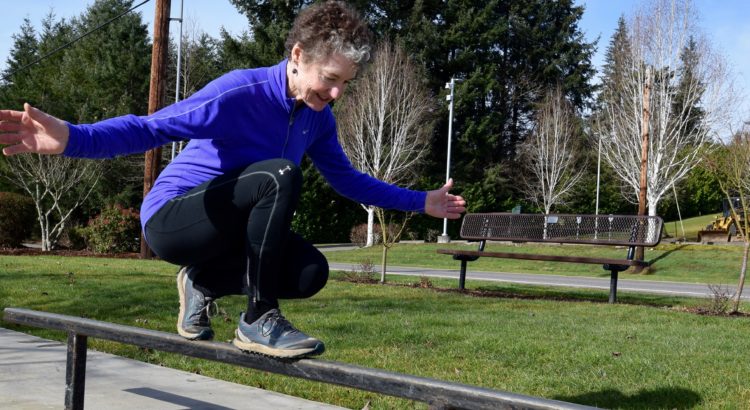
MOBILITY
- control of movement, joint by joint
Eric Cobb, in Zhealth, presents mobility – that joint by joint control as “movement maps” in the brain – so that by deliberately practicing moving a joint through its range of motion, we gain capacity to balance better, build strength better, move better.
Here are some follow-alongs for “neuro-mobility” we use in our explorations of MOVEment
MOVEment as Coordination –
Assuming some strength to move, some balance, and some capacity to control joint action to maintain a position, how we learn to assemble these capacities to MOVE – is what that strength, mobility and balance are enabling:
- movement patterns.
- via co-ordination of limbs in relation to each other
- supporting locomotion
Almost all our movements are learned – even walking. They are stored in various parts of our brain. As we learn movements those patterns move to different brain areas too. And these patterns interact with our entire brain – from cortex to brain stem to cerebellum. Learning movements also helps learning and remembering other knowledge too. Quality movement helps us learn and remember not just motor skills but cognitive and social skills as well. No kidding.
Movement coordinates strength, balance, and mobility, bringing them together for some pretty basic interactions:
over under around through – with the environment – from which, everything.
Later we’ll talk about two associated properties of movement – our relationship with AIR and our relationship with ENERGY and how each of these enables the quality of our movement.
EXPERIMENTS in MOVEMENT – PLAY/EXPLORE
To build up a foundation for understanding and exploring movement, we’ll be looking at how to play with each of its gravity-based attributes, relative to how these interactions affect our whole bodies – all 11 of our organ systems, right down to every cell.
For now, a key heuristic is that we are use it or lose it systems, so quality movement work is going to let us engage our whole bodies to interact with our whole environment.
Examples? good movement positively affects our guts – and our microbiome. Good movement keeps patterns of those movements alive in the brain’s nervous tissue.
Good movement affects our balance, our vision, our emotional wellbeing, our capacity to handle stress – good movement includes great breathing and owning the movement of each joint in our bodies to create capacity to move over and under around and through.
Spending some time to explore quality movement also feels great, don’t you think? if you’re not sure, let’s explore that hypothesis together.
if you’re staff at the U of Southampton and it’s before June 28 Join us for MOVE EAT BURN BUILD BETTER 2023
Social Media is the Refined Sugar of Communication
Social media is the refined sugar of communication.
What does that mean?
The Tl;dr version is that social media can be thought of as refined communications like table sugar is a refined food.
A refined food has stripped out a lot of nutrients present in its whole source. Social media likewise strips out parts of – let’s coin it – “whole human communication”, like being face to face, physically co-located, identifiable, rich with multiple kinds of signals from body language to vocal tone to speed of utterance.
Whole food both provides more nutrients than refined food – and it is often more complex for our bodies to process/digest. Similarly, whole human communication is often both more meaningful and more challenging.

Social media’s stripped down comms makes incredibly easy some parts of communication. The refinement removes certain complexities that are part of whole human communication. While that removal can be seen as a plus in certain circumstances, a diet high in that kind of communication has consequences for our health and wellbeing – physically, emotionally socially.
Quality
A diet high in refined food alone leaves us malnourished; that malnourishment has knock on effects in terms of limiting our capacity for healthy physical growth, resistance to disease, and developing intelligence – both social and intellectual.
Similarly, a diet high in refined comms has knock on effects in our wellbeing. We see signs from increased anxiety and depression as just one example of negative side effects. Broader consequences are also around decision making when based on these refined information sources, and other concerns have included negative impacts on discernment in evaluating information; practicing reflection before reaction.
Our internal Wiring:
It’s important to note, too, that just as we are wired to require whole foods to best meet our nutritional needs, it seems we are also wired – including neurologically, physically – to engage in whole human communication.
And just as we need skills to learn how to find and prepare foods to make sure we get sufficient quality nutrients, we need to learn skills to be able to engage with each other – to get our social nutrients – in whole human communication.
Outsourcing
When we choose refined food/fast food, we are both outsourcing those food skills to a third party, and letting them present us – often – with poorer nutrient quality alternatives.
Similarly, when we use social media as our main type of communication, we are likewise outsourcing to that platform, what we say and how we can say it; how we can convey it. Those limitations overemphasize some types of communications while stripping out others. There are consequences to relying on outsourcing our comms, to reducing practice of whole human communication.
Please note: this is not to say that social media/fast food or table sugar is bad. It’s as in all things about our health and wellbeing, about ratios. If our diet is in the main fast food, the side effects because of poor nutrient quality can include malnourishment and obesity simultaneously.
In communication diet high in social media we spend less time learning how to cope with the challenge of in person communication, managing multiple points of view civilly, and giving ourselves time to reflect – to name a few. Its delightful ease and immediacy make too much of a good thing an imbalance. Such imbalances are not healthy, physically, socially, emotionally.

Again, social media – like table sugar – is not evil. Like a slice of birthday cake at the end of a meal on a special occasion it is a delight, a treat and a rush. But when it is our dominant form of communication, like only cake all the time, it weakens us.
——-
TL;dr –
A quick overview on Sugar as a refined food – and why high ratios of it are problematic for health.
Table Sugar is an highly refined food, where food is defined as the substances that provide nutritional support for living things. We talk about these substances as macro nutrients like carbohydrates, proteins, fats – and micro nutrients like vitamins minerals – and phytonutrients – and likely other components we haven’t yet fully identified.
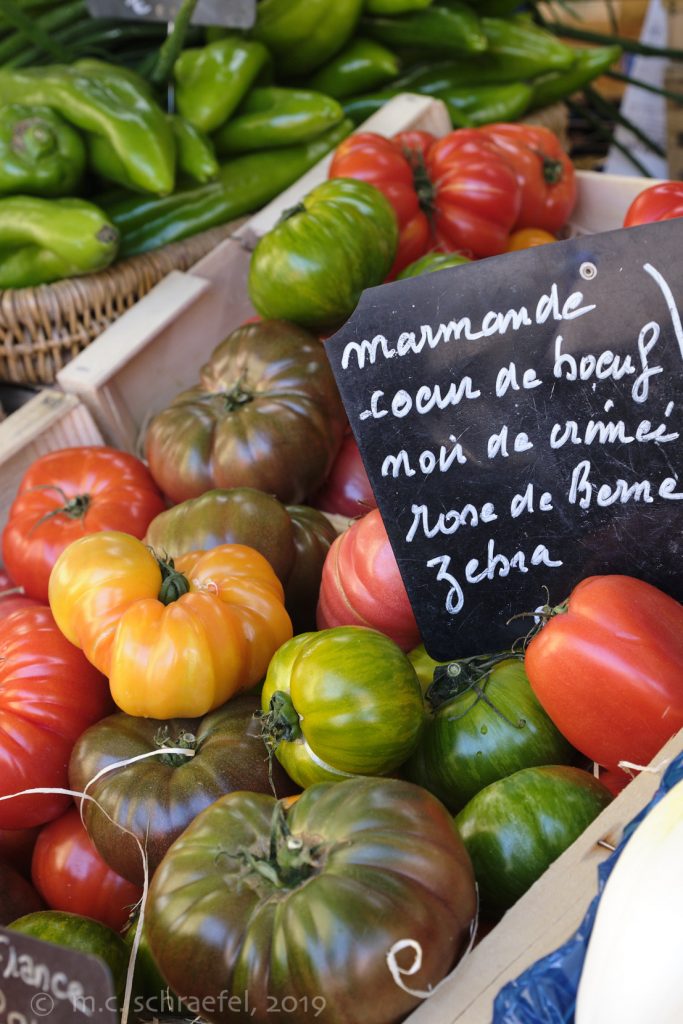
Sugar has been refined from its source plant to the point that it contains only one macro nutrient: a very simple carbohydrate made up of sucrose, a disaccharide composed of two simple sugars glucose and fructose – the bottom line is that these components mean that this carbohydrate digests quickly, which further means it can provide the body a very fast source of energy.
That’s the potentially positive side. Another is sugar is used to add sweetness to foods we create to make them more tasty, more palatable. A spoon full of sugar helps the medicine go down, as the song goes.
Sugar is added to a lot of our food – even savory foods like French fries often have sugar added. Toothpaste frequently has sugar added. We crave sugar. We speak of getting a sugar hit. It’s an easy energy and mood high. It has these effects in no small part because sugar is so easy for our bodies to process, to get the energy and the palate rush.
And therein lies the problem: it’s too easy to digest, and get that rush.
Sugar exists in lots of food sources like plants naturally – fruits have sugar; many vegetables have considerable amounts of sugar too – like tomoatoes, carots, peas. But what else these plants – as whole foods – have are other nutrients that our bodies need to function. Fruits for instance have other carbohydrates than sugar – including more complex starches in their skins that slow digestion, and support the gut as prebiotics. Plants that have higher protein components like mushrooms and legumes – as well as sugars – are also more complex to digest, as well as having increased nutrient value.
The digestion slowing of having more complex types of nutrients hitting the gut is important for health. Here’s one reason why:
Because refined sugar in food digests so quickly – which means it gets into the blood stream quickly – our bodies get access to a whole lot of resource for energy production – a whole lot of calories.
As soon as that release into the bloodstream happens, the body needs to find somewhere to store all this energy resource. This is where we hear about insulin: the hormone signaling the body that there’s glucose ( a type of sugar) in the blood that needs to get put away. When we have more glucose available than we need for immediate replenishment or use, it has to get stored. Fat is where we keep excess fuel for later use.
By eating more complex or whole foods, we have a higher nutrient to fuel balance; thus, we get more nutrients and less excess material for storage. Also, that resource goes into the blood stream far more slowly, so there is a higher likelihood that we will have done something to deplete our stores (burn calories) and require replenishment, rather than need to store excess resource.
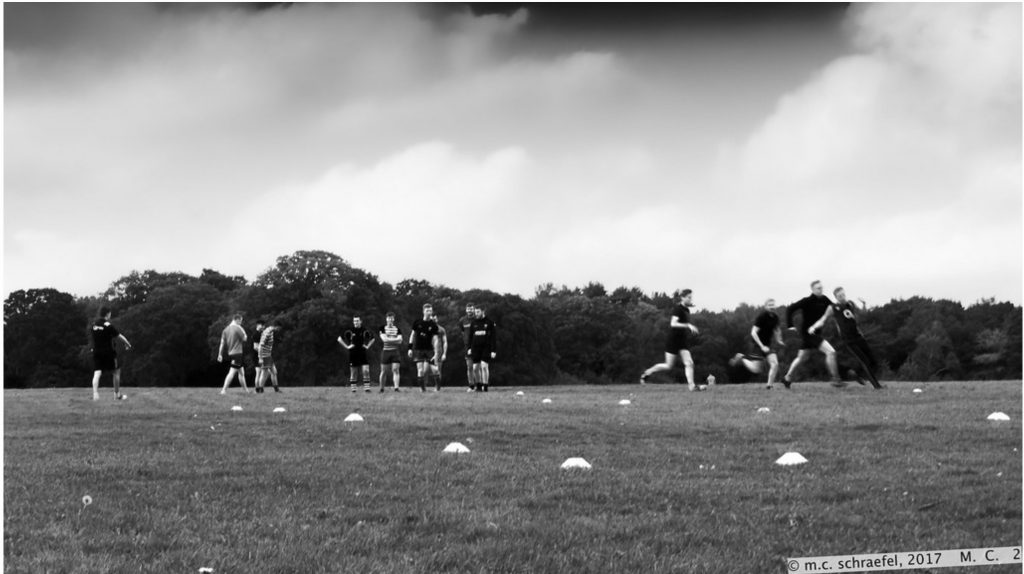
Analogy
I’m trying to frame an analogy here: a naïve one would suggest we need some logs for a fire and then we have way more logs than we can use for our needs – like a cooking fire – so we need to store the logs. There’s a cost to that storage – especially if we have to be on the move – and thus we have to take that resource with us everywhere. It’s more efficient when on the move to be able to blend some resource carried, along with gathering up what’s needed for just-in-time use. Optimal is to be able to get the minimal amount of a type of fuel that can keep the system operating as efficiently as possible.
And that’s the thing about whole food: unlike refined food like sugar that is predominantly one nutrient – carbohydrate, and so largely only valuable as an energy source – whole food provides us with more of the resources we need to keep running well – to maintain our whole bodies – which a single nutrient is insufficient to afford – and it provides better time release of those nutrients so we can use them effectively over time, too.
- m.c. schraefel, oct 8, 2019
Implications for design
For the Human Computer Interaction folks in the house, we might ask, what might more “whole communications” look like, when mediated by interactive technology.
Off the top we might say that video calling and voice calls both bring more “wholeness” to the communication. Of necessity, we are more present; more there than in text blurbs.
The literature is long around the limitations of video-based interaction in terms of constraining movement, lack of capture of whole context etc. Intriguingly, the questions raised from 30 years ago are still with us. We have likely all experienced when voice communication – perhaps enabled by wireless audio of headsets or good mics that enable us to move around while speaking – affords us more freedom to be ourselves in some ways than having to focus with a camera. Thus mechanistically, when looking to support more verisimilitude, the issues are well studied, and there’s ongoing work in that respect.
There may be ways to ask questions here that are less about improving presence, and more about the assumptions that facilitate the kinds on non-present communication that we have. Plainly, culture has a huge role to play in this space – that social media is not just a driver of change in practice, but has aligned with norms – such as convenience, speed, safety, anonymity, immediacy.
If we were to design new comms technologies, a question i would have is: what values are we designing to support? We may want to support more the kind of exchange we would have if we were in person and not in a crowd, while still being “open” to others to observe, share, comment upon. How do that? We may want to support slowing ourselves down from our own rapid reply or posting – but in order to do what?
SKILLS From my area of work in inbodied interaction, i would be asking about what are the physiological processes are at play in things like our getting triggered and our urge to rush in and correct another, or yell, or applaud, or display. I would also be look at, just as we do in other areas of health, like food, look at what is important to support.
Not Just Sugar-Free. The goal may not be to re-design the sugar, but to look at helping the person get more whole food. In the case of communication, the goal for design may be to build tools to help people become more comfortable with being physically present with others. In that case, the intervention may be: how to help people learn skills to communicate better in person? That’s currently where work in the WellthLab is focused, along with tools to help evaluate progress and feedback.
One more time: not trying to say that social media is evil; only that like sugar or other highly processed foods – social media is a refined form of human communication: it takes out the stuff that can make it challenging, time consuming, and potentially richer. And we, in our old old wiring, still need that – need to build those skills and strengths – to be fully wholly human.
What do you think?
[added oct 11]
Exploring Cold Showers – discomfort challenge 1
Welcome – the following is an invitation to:
- explore how you respond to cold
- use that experience to inform design to embrace the cold
Why? This is Challenge One in preparation for our Uncomfortable Design Workshop, Ubicomp 2019 in London, Sept 10. Anyone can register for this workshop – it’s open – Join US!

Ok why else cold shower for the sake of design? The premise of the workshop is that we’re wired to be a little uncomfortable – it’s how we adapt and get better. A little colder, a little hungrier, a little more load from time to time. REad more at the workshop main page.
Cold Shower for 5 days: know thyself
This week’s Discomfort Design challenge is simple: explore how, over the course of 5 days (and let’s say 5 showers) your response to turning off the hot water changes.
Guaranteed, if you haven’t tried this kind of cold-shower exploration before, you may surprise yourself.

PROTOCOL For the SHOWERING:
– 30sec to 3 mins in a “use the cold tap only” shower – can be at the end of the shower, or that’s the whole thing (you’ll see below an option for shampooing that starts warm and then turns cold)
- -approaches: the masochist – just step into it;
- the rest of us – put arms in; rub; move up to shoulders, front, then turn around and do the rest with your back in – big skin area. Rubbing yourself to acclimitise is fine. Before starting into the cold, mentally focus and remain calm. That first gasp will pass.
OPTIONS: if you have a timer, set an alarm to go off every 30 secs to three minutes just to see what you notice. When do you get to the “this is ok” place? Does it happen sooner every day?
GEEK: what is your cold water shower temperature? In San Diego of late it only got to 17C. In the UK right now, it’s 12.
FOR YOU: what do you notice about yourself before, during and after the shower? What do you notice is the same/different each day?
you can check out this inventory the Rand36 – pre and post– used in one of the shower studies too
why bother to test this? In terms of the workshop goals, we’re focusing on where discomfort for us is good for us and the environment, so:
Relation to Sustainability goals for Workshop:
If we can work in environments that let us set thermostats down then we are conserving energy. That’s one of the biggies.
To this end, If we can become friends with slightly colder scenarios, we may find this shift in temperature an easy win, new normal.
We may also find ourselves willing to explore more physical means of transportation for longer in a year and in less ideal weather. Whether this is walking or biking more of the year. This kind of active transport is both good for our health and again reduces energy.
That’s also a potential benefit too around the built environment.
Relation to Personal Health – including Mental Health.
In sports science there’s considerable interest in cold showers to assist with recovery after a big fat bout of athletic prowess – latest work seems to show that “active recovery” is just as good – or possibly better – for that recovery than cold water immersion
But let’s set that aside for a sec since if we shower, let’s say, when we get up in the morning, we may not need an ice bath to do recovery from an active sleep – so why have a cold shower? It’s certainly bracing – so if you’re trying to kick caffeine there ya go. But what about other aspects of health?
Not all Cold Water is Equal
There’s a lot of open questions about what showers vs ice baths vs cold water swimming (outdoor pools or sea) do for a person, and what the most effective temperatures are, but here are some of the explored parts.

1) breathing – moving from initial shock shallow breathing to deeper breathing to relax into the experience – this is a big part of how we get over that feeling of panic when hit with cold.
2) antioxidant levels? – in ice swimmer, it seems that antioxidant levels go up. Thats great for longevity and sickness prevention.
3) less tension/fatigue? And then there’s cold water pool outdoors swimmers – less tension/fatigue.
4) hormone responses – gender – here’s a fun observation from one of the rare studies looking at gender effects of cold stress (being cooled to a point where core temperature drops – in a process taking at most 2h). Men and women cool down and recover pretty much in the same way – but what happens inside us seems to be different in 4 ways. 1) men shiver more than women 2) men have a big stress response (women don’t) 3) men have a bigger metabolic response (producing heat) to cope with the cold than women. 4) one inflammatory marker – TNF-alpha – goes down in men but not in women. That said – inflammatory markers didn’t go up in men or women.
Bottom line: men have a bigger metabolic response to cold stress; women, insulative. This may have to do with body fat to muscle ratios. Women may use more what’s called non-shivering thermogenesis (NST) to cope with cold stress (you’ve heard of brown fat or BAT?). Open questions: what does cold stress do to our immune response?
5) immune response – there is one recent cold shower study that may suggest at least a correlation of better immune function with cold showering for as little as 30seconds at the end of an any-temperature shower for 30 days. And that winter swimmer study really seemed to lean into that way back in 2000.
, folks actually did report both better wellbeing after a month of cold showers, and also that their reported days of illness intensity went down.
6) depression be gone? Only one study – but oft referenced in the popular press – showed there *may* be an effect mitigating depression.
7) Benefits to Hair – why else are we in the shower besides our spiritual and homeostatic wellbeing? You have an excuse to use a two phased approach – do your warm water shower to be kind to yourself and shampoo; hit the cold for the rinse and soaping the rest of yourself – also you’ll find that rubbing yourself when adapting to the cold can help shift through the shivering.
There are a multitude of other claims/studies from fixing circulatory systems to upping testosterone, relaxing, upping fertility and increasing weight loss – and the big one in hot weather – cold showers give you better night’s sleep. Right because all the reasons that they cause you to wake up in the AM suddenly invert at night. No. I mean go ahead and experiment with a cold shower vs a warm one at night – see what happens in what context.
(i’ll plug in the refs over the week for y’all)
ROLE of Cold for DISCOMFORT DESIGN – here’s at least one research question. The role of cold on cognitions has been studied very little. One thing does seem clear: cold is distracting. If we are focussing on it, we are distracted, and thus not focussing on the task at hand. Not great in a work environment especially if trying to solve a problem, or be present to one’s family. Cold adaptation seems to suggest that that improves task focus. (Duh?) but that adaptation might also have other creative benefits to be explored.
SUSTAINABILITY AND HEALTH – This workshop is about how to put together opportunities to leverage our physiology of discomfort for positive benefit to help create sustainability benefits.
So the focus on exploring cold adaptation potential via cold showering is a way to see
- how might cold showering help a person, personally, to be healthier happier and sustainabler?
- how might the experiences of the shower be translated to the workplace or home?
- what else?
- And BIG 4 for the workshop: how translate these ideas into Interactive Discomfort Design.
Hello world!
Welcome to Southampton Generic Blogs Sites. This is your first post. Edit or delete it, then start blogging!
